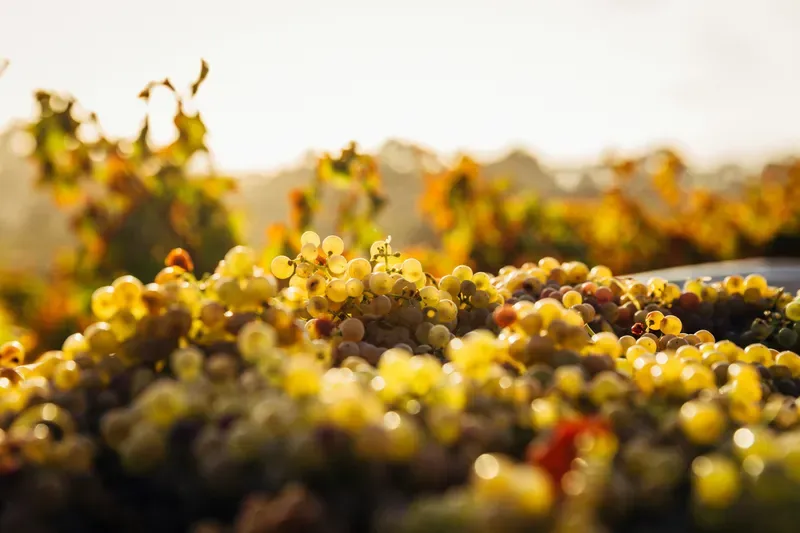A Journey Through the Wines of Andalusia: A Taste of Southern Spain

Andalusia, the sun-drenched region of southern Spain, is not only famous for its rich history, flamenco, and breathtaking landscapes but also for its long-standing winemaking tradition. With a variety of microclimates, unique terroirs, and indigenous grape varieties, Andalusia produces a wide range of wines that are as diverse as the region itself.
From the famed sherry wines of Jerez to the lesser-known but equally delightful wines of Málaga and beyond, Andalusia offers a wine experience like no other.
In this blog post, we’ll take you on a journey through the wines of Andalusia, highlighting the key wine regions, the different styles of wine, and the traditions that make this region so special.
1. The Sherry Triangle: Jerez, Sanlúcar de Barrameda, and El Puerto de Santa María
When people think of Andalusian wine, the first thing that often comes to mind is sherry. This fortified wine, produced in the so-called Sherry Triangle — Jerez de la Frontera, Sanlúcar de Barrameda, and El Puerto de Santa María — is one of Spain’s most iconic contributions to the wine world.
Sherry is made from three main grape varieties: Palomino Fino, Pedro Ximénez (PX), and Moscatel. These grapes are used to produce a range of sherry styles, from bone-dry to lusciously sweet. The key to sherry’s unique flavor profile is the aging process, which often takes place under a layer of yeast known as flor in a system called solera.
Key Sherry Styles:
- Fino and Manzanilla: These are the driest and lightest styles of sherry. Fino is aged under flor in Jerez, while Manzanilla is produced exclusively in Sanlúcar de Barrameda, where the coastal climate gives it a slightly saltier character. Both are perfect for pairing with tapas, particularly olives, almonds, and seafood.
- Amontillado: A hybrid style that begins its life under flor, like Fino, but is then exposed to oxygen, giving it a richer, nuttier flavor. Amontillado pairs beautifully with cured meats and aged cheeses.
- Oloroso: A sherry that is aged without flor, leading to full-bodied, oxidative flavors of caramel, nuts, and dried fruit. This style is often paired with game, stews, or dark chocolate.
- Pedro Ximénez (PX): A sweet sherry made from sun-dried Pedro Ximénez grapes. It’s thick, syrupy, and intensely sweet, with flavors of raisins, figs, and molasses, often enjoyed as a dessert wine or drizzled over vanilla ice cream.

2. The Sweet Wines of Málaga
Málaga, one of Spain’s oldest wine-producing regions, is known for its sweet wines made from Moscatel and Pedro Ximénez grapes. These wines, often referred to simply as Málaga wines, have been enjoyed for centuries, dating back to Roman times. The region’s warm, sunny climate, combined with the influence of the Mediterranean Sea, creates ideal conditions for producing these luscious, aromatic wines.
Málaga wines are typically categorized by their sweetness levels, ranging from seco (dry) to dulce (sweet), with the sweetest versions being made from grapes that are dried under the Andalusian sun. These wines are perfect for pairing with desserts like almond cakes, dried fruits, or blue cheeses.
One of the most renowned wine estates in the region is Bodegas Jorge Ordóñez, which has played a key role in revitalizing the production of high-quality sweet wines in Málaga.

3. Montilla-Moriles: Andalusia’s Hidden Gem
While Montilla-Moriles may not have the same international recognition as Jerez, this region, located inland near Córdoba, is home to some of Andalusia’s most intriguing wines. The region primarily uses the Pedro Ximénez grape, which thrives in the hot, dry conditions of the area.
Montilla-Moriles is known for its Fino-style wines, which, like their counterparts in Jerez, are aged under flor. However, because the Pedro Ximénez grape has higher natural sugar levels than Palomino, the wines from Montilla-Moriles often have a richer, fuller body, even in their driest styles.
In addition to Fino, Montilla-Moriles produces outstanding Amontillado, Oloroso, and, of course, sweet Pedro Ximénez wines. These wines are less fortified than sherries, often naturally reaching high alcohol levels due to the warm climate. The region’s wines are a well-kept secret and offer excellent value for those looking to explore beyond the traditional sherry offerings.
4. Sierras de Málaga: Andalusia’s Emerging Wine Scene
While Andalusia is best known for its fortified wines, the region is also producing some exciting still wines, particularly in the Sierras de Málaga. This mountainous area, which includes the rugged Serranía de Ronda, has become a hotspot for innovative winemakers who are producing high-quality red, white, and rosé wines.
Grapes like Tempranillo, Syrah, Cabernet Sauvignon, and even Chardonnay are grown here, taking advantage of the altitude and cooler temperatures in the mountains. These wines often have a freshness and elegance that contrasts with the bold, rich sherries of the coast. The wines from Ronda, in particular, have gained attention for their quality and unique character, with many small, boutique wineries offering tastings and tours.
5. The Local Pairings: Andalusian Wine Meets Andalusian Cuisine
No exploration of Andalusian wine would be complete without mentioning the perfect pairings between the region’s wines and its cuisine. Andalusia’s culinary traditions are rooted in fresh, local ingredients, many of which are perfectly suited to the diverse styles of wine produced here.
For example, a crisp Manzanilla or Fino sherry is the perfect match for the region’s famous pescaíto frito (fried fish) and gambas (prawns). Richer Olorosos and Amontillados pair beautifully with slow-cooked rabo de toro (oxtail stew) or jamón ibérico (Iberian ham). And for dessert, a sweet Pedro Ximénez is a natural companion to almond-based sweets, figs, or even dark chocolate.

Conclusion: A Wine Lover’s Paradise
Andalusia’s wines offer a journey through time and place, from the ancient sherry bodegas of Jerez to the emerging vineyards of Ronda. Whether you’re a seasoned wine enthusiast or simply curious to explore new flavors, Andalusia has something to offer every palate. From the crisp, dry sherries that pair perfectly with tapas to the sweet wines of Málaga that transport you to sunny Spanish afternoons, Andalusia’s wines are a reflection of the region’s warmth, diversity, and deep-rooted traditions.
So, next time you’re in southern Spain, be sure to raise a glass and savor the unique taste of Andalusia’s wines—each sip a story of the land, the people, and the passion that make this region so special.







